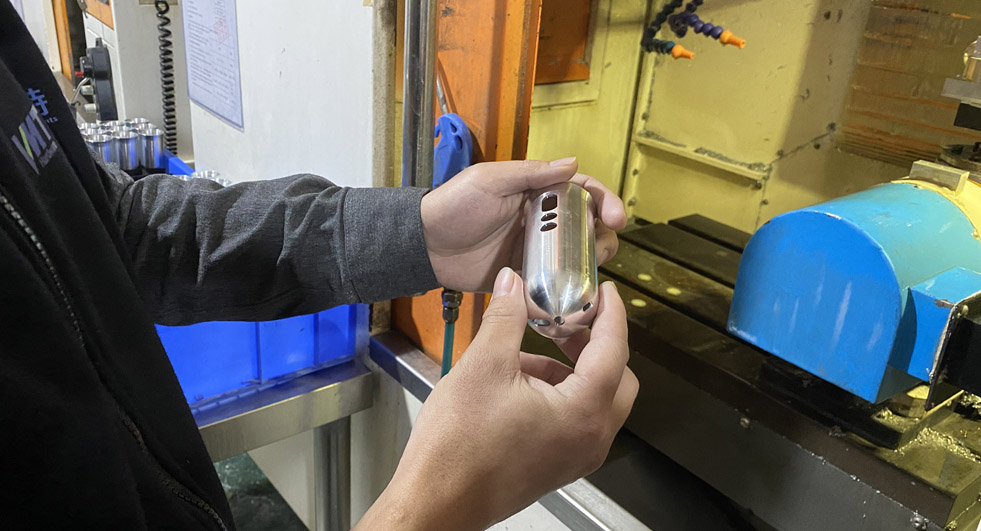
How to Realize Mirror Surface (Surface Finish) CNC Machining?
Mirror processing means that the processed surface can reflect the image like a mirror. This level has reached a very good surface quality of the workpiece. Mirror processing can not only create a high “value” for the product, but also reduce the notch effect and prolong the fatigue of the workpiece. Life: It is of great significance in many assembly and sealing structures. Polishing mirror processing technology is mainly used to reduce the surface roughness of the workpiece. When selecting the polishing method for metal workpieces, different methods can be selected according to different needs. The following are several common methods of polishing mirror processing.
1. Mechanical Polishing
Mechanical polishing is a polishing method that relies on cutting and plastic deformation of the material surface to remove the polished convex parts to obtain a smooth surface. Generally, oil stone sticks, wool wheels, sandpaper, etc. are used, mainly manual operations, special parts such as rotation For the surface of the body, auxiliary tools such as turntable can be used, and the method of ultra-precision polishing can be used for the surface quality requirements. Ultra-precision polishing is the use of special abrasive tools, which are pressed against the processed surface of the workpiece in a polishing liquid containing abrasives for high-speed rotation. The surface roughness of Ra0.008μm can be achieved by using this technology, which is the highest among various polishing methods. Optical lens molds often use this method.
2. Chemical Polishing
Chemical polishing is to make the surface microscopic convex part of the material in the chemical medium dissolve preferentially than the concave part, so as to obtain a smooth surface. The main advantage of this method is that it does not require complicated equipment, can polish complex-shaped workpieces, and can polish many workpieces at the same time, with high efficiency. The core problem of chemical polishing is the preparation of polishing liquid. The surface roughness obtained by chemical polishing is generally several 10 μm.
3. Electrolytic Polishing
The basic principle of electrolytic polishing is the same as that of chemical polishing, that is, by selectively dissolving tiny protrusions on the surface of the material to smooth the surface. Compared with chemical polishing, it can eliminate the influence of cathode reaction, and the effect is better. The electrochemical polishing process is divided into two steps: (1) Macroscopic leveling. The dissolved product diffuses into the electrolyte, and the geometric roughness of the material surface decreases, Ra>1μm. (2) Low-light leveling: Anode polarization, surface brightness is improved, Ra<1μm.
4. Hawk Can Mirror Processing Equipment
As a new polishing process, it has unique advantages in the processing of many types of metal parts. It can replace traditional grinding machines, rolling, boring, honing, polishing machines, belt machines and other
metal surface finishing equipment and processes; it makes the processing of metal workpieces with high finish become easy. Hawker can not only polish, but also bring many additional benefits: the surface finish of
the processed workpiece can be improved by more than 3 levels (the roughness Ra value can easily reach 0.2 or less); and the surface microhardness of the workpiece can be increased by more than 20% ; And greatly improve the surface wear resistance and corrosion resistance of the workpiece. Hawk can be used to process various stainless steel and other metal workpieces.
5. Ultrasonic Polishing
Put the workpiece into the abrasive suspension and put it in the ultrasonic field together, relying on the vibration of the ultrasonic to make the abrasive grind and polish on the surface of the workpiece. Ultrasonic machining has a small macroscopic force and will not cause deformation of the workpiece, but it is difficult to manufacture and install tooling. Ultrasonic processing can be combined with chemical or electrochemical methods. On the basis of solution corrosion and electrolysis, ultrasonic vibration is applied to stir the solution, so that the dissolved products on the surface of the workpiece are separated, and the corrosion or electrolyte near the surface is uniform; the cavitation effect of ultrasonic in the liquid can also inhibit the corrosion process and benefit the surface brightening.
6. Fluid Polishing
Fluid polishing relies on high-speed flowing liquid and the abrasive particles carried by it to wash the surface of the workpiece to achieve the purpose of polishing. Commonly used methods are: abrasive jet processing, liquid jet processing, hydrodynamic grinding and so on. Hydrodynamic grinding is driven by hydraulic pressure to make the liquid medium carrying abrasive particles flow back and forth across the surface of the workpiece at high speed. The medium is mainly made of special compounds (polymer-like substances) with good flowability under lower pressure and mixed with abrasives. The abrasives can be made of silicon carbide powder.